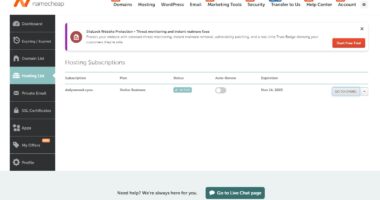How t o Improve Site Health Score Fast
o Improve Site Health Score Fast
Your website health score is a critical indicator of how well your site is optimized for users and search engines. A high site health score means better SEO performance, faster loading times, and fewer technical issues that could hurt your rankings. Whether you’re running a blog, an eCommerce store, or a startup website, improving your site health can lead to higher traffic, better user experience, and increased conversions.
In this guide, we’ll show you how to improve your site health score fast, using practical and proven SEO techniques that work in 2025.
What is Site Health Score?
The site health score is a percentage rating that reflects how technically optimized your website is. This score is commonly seen in SEO tools like Ahrefs, SEMrush, or Google Search Console, and it covers various elements such as:
-
Crawl errors
-
Broken links
-
Page speed issues
-
Mobile usability
-
Security and HTTPS
-
Meta tags and schema
-
Duplicate content
Improving this score quickly requires attention to both on-page SEO and technical SEO issues.
Why Site Health Matters for SEO
Search engines like Google prioritize websites that are clean, fast, and error-free. A poor site health score means search engines may struggle to crawl and index your pages, leading to lower rankings and less organic traffic.
Fast improvement of your site health score not only helps with rankings but also boosts user trust, improves site usability, and enhances your overall digital presence.
How to Improve Site Health Score Fast
Let’s break down the top actionable steps you can take today to increase your site health score efficiently.
1. Fix Broken Links and 404 Errors
One of the fastest ways to improve your score is to identify and fix broken internal and external links. Broken links not only harm user experience but also confuse search engine crawlers.
How to fix:
-
Use tools like Ahrefs Site Audit or Screaming Frog
-
Redirect broken URLs using 301 redirects
-
Update outdated external links
2. Improve Page Loading Speed
Site speed is a major ranking factor. A slow website leads to higher bounce rates and lower engagement.
How to speed up your site:
-
Compress images using tools like TinyPNG
-
Minify CSS, JavaScript, and HTML
-
Use a content delivery network (CDN) like Cloudflare
-
Upgrade to faster hosting (e.g., VPS or cloud hosting)
3. Ensure Mobile Optimization
Over 60% of web traffic comes from mobile devices in 2025. A mobile-friendly website is essential for SEO and user experience.
Quick mobile optimization tips:
-
Use responsive design
-
Avoid pop-ups that cover content
-
Test your site using Google’s Mobile-Friendly Test
4. Implement HTTPS and Security Measures
Google gives preference to secure websites (HTTPS). If your website still uses HTTP, switch to HTTPS immediately using an SSL certificate.
Additional security tips:
-
Regularly update plugins and themes
-
Use security plugins like Wordfence or Sucuri
-
Schedule regular site backups
5. Fix Duplicate Content Issues
Duplicate content confuses search engines and dilutes your SEO efforts.
How to fix it:
-
Use canonical tags to tell Google which version of a page to index
-
Avoid copying content across pages or from other websites
-
Use tools like Copyscape to identify duplicates
6. Optimize Metadata and Headings
Missing or duplicate meta titles and meta descriptions are common issues that hurt your health score.
Optimization tips:
-
Write unique, keyword-rich meta titles and descriptions for each page
-
Use proper heading structure (H1, H2, H3) for content hierarchy
-
Keep titles under 60 characters and meta descriptions under 160
7. Audit and Submit Your Sitemap
A sitemap helps search engines understand your site structure. Make sure it’s up to date and submitted to Google Search Console.
To do this:
-
Generate an XML sitemap using Yoast SEO or Rank Math
-
Submit it via Google Search Console
-
Remove outdated or deleted URLs from the sitemap
8. Improve Core Web Vitals
Core Web Vitals are Google’s user experience metrics, including:
-
Largest Contentful Paint (LCP)
-
First Input Delay (FID)
-
Cumulative Layout Shift (CLS)
Use Google PageSpeed Insights or Lighthouse to test and optimize your Core Web Vitals.
Final Tips to Maintain a Healthy Site
Once you’ve improved your site health score, it’s important to maintain it. Regular monitoring, updates, and content audits can help you stay ahead of potential issues. Here are a few tips:
-
Perform monthly SEO audits
-
Keep plugins and software updated
-
Monitor Google Search Console for new errors
-
Add fresh, high-quality content regularly
Conclusion
Improving your site health score fast is completely achievable if you follow the right strategies. From fixing broken links to improving speed and optimizing for mobile, each step plays a critical role in creating a site that both users and search engines love.
By staying proactive and using the right tools, your website can enjoy better rankings, faster load times, and increased visibility in 2025 and beyond.
For more guides, SEO tools, and startup-friendly resources, visit https://digitalnew.it.com.









